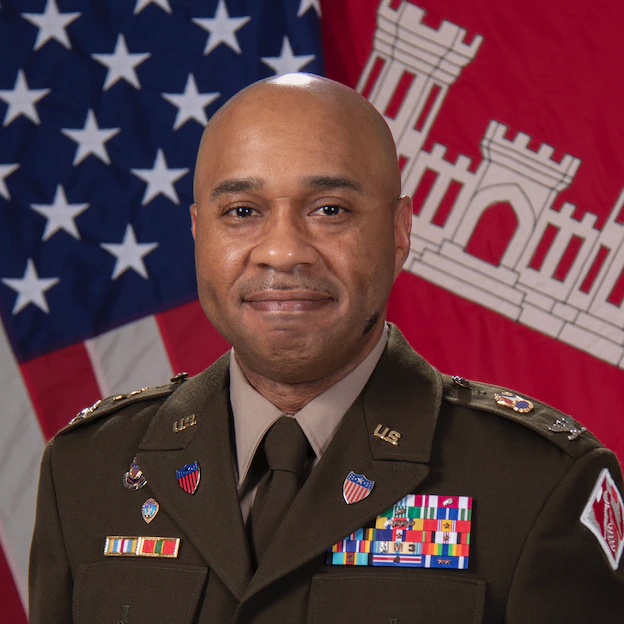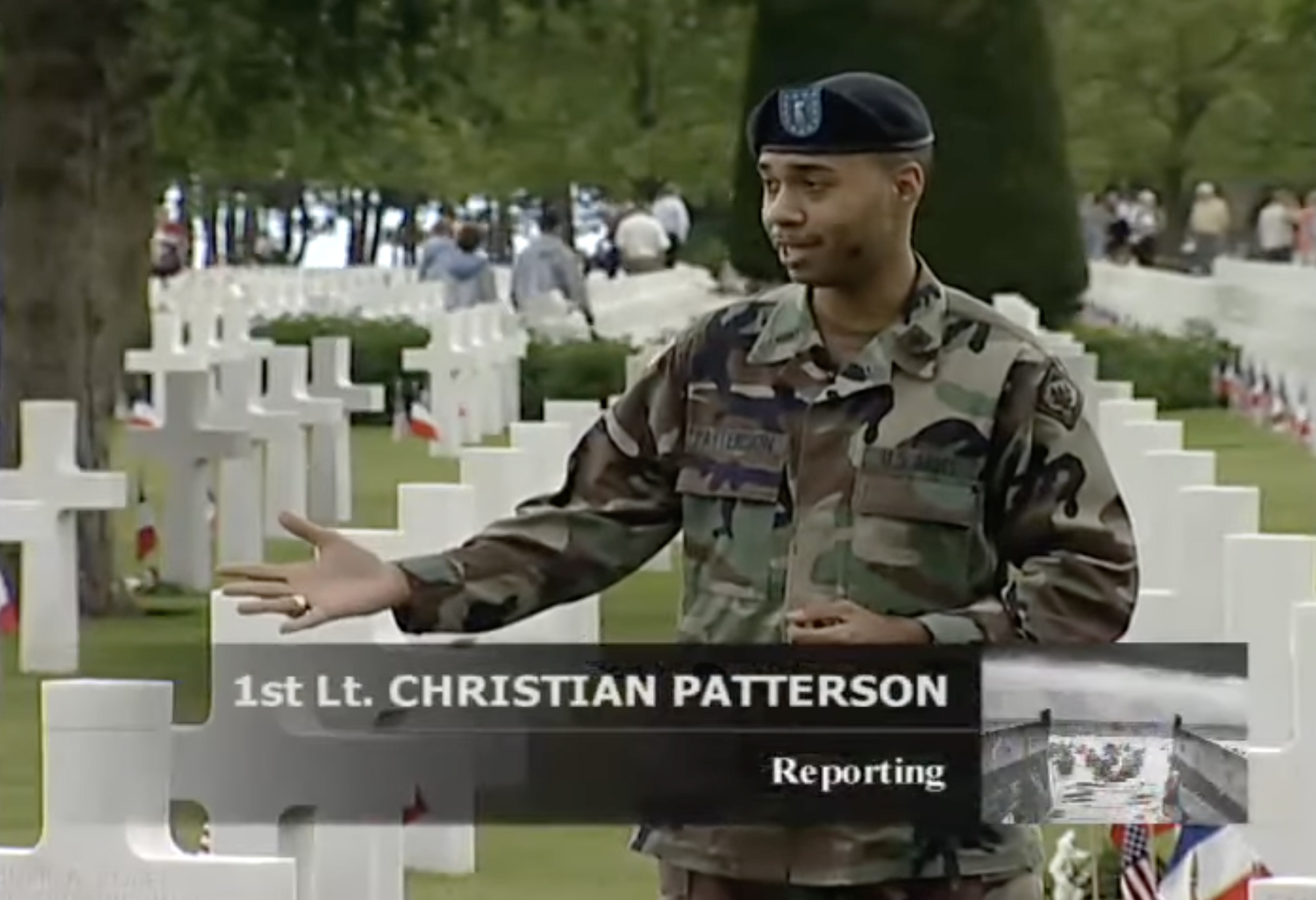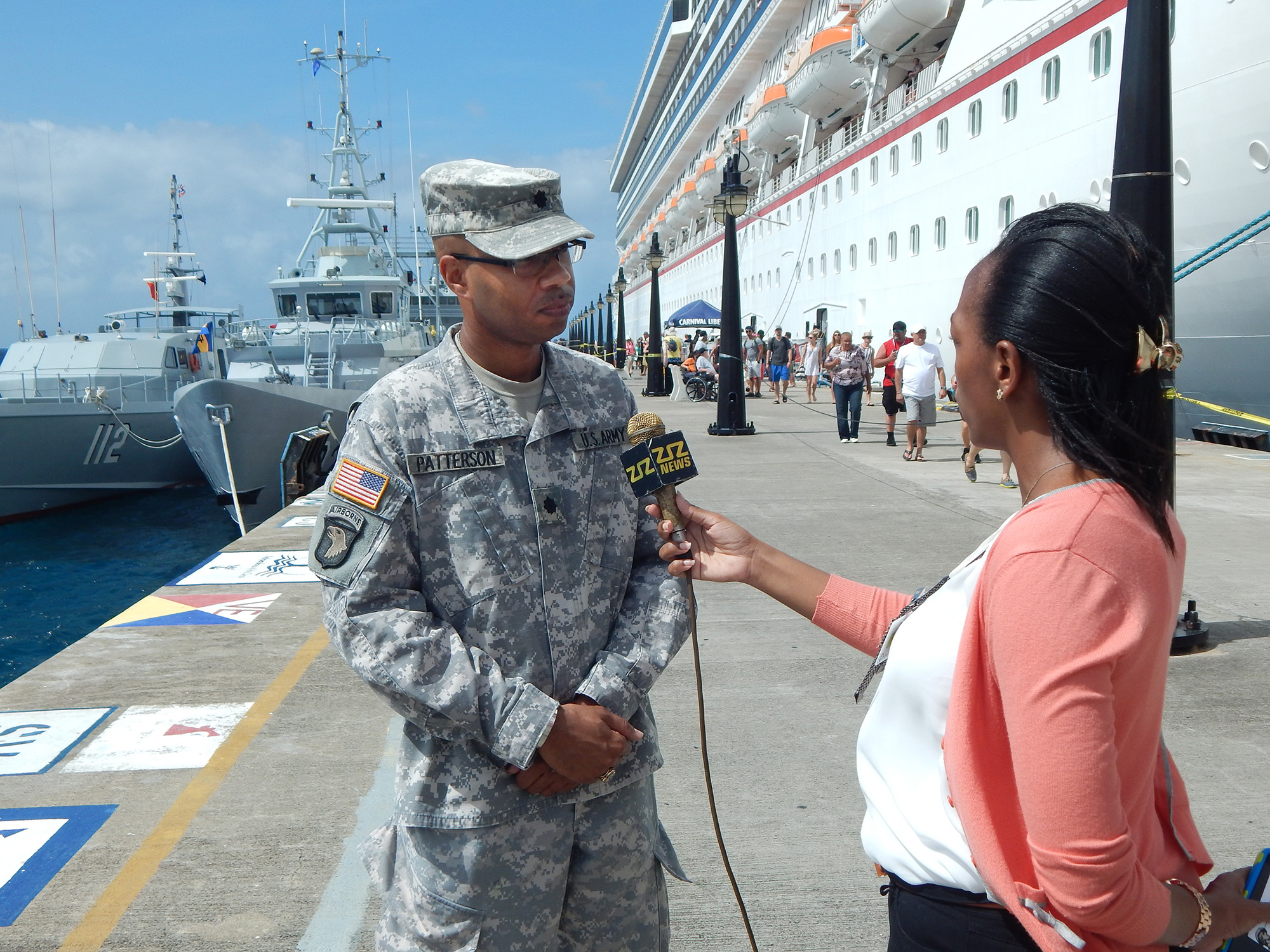Engineering with Nature to Protect People
Meet Col. Christian Patterson, Army Commander and LSU Manship Alumnus

Col. Christian Patterson, commander of the U.S. Army Engineer Research and Development Center and LSU Manship School of Mass Communication alumnus, is a talking, walking example of how you need storytelling, not just engineering expertise, to have successful engineering projects.
LSU Manship School of Mass Communication alumnus Christian Patterson’s dream was to become a sportscaster, but his communication skills led to opportunities he never imagined. He now commands the U.S. Army Engineer Research and Development Center, a world leader in the development of coastal science and engineering solutions with a $1.8 billion research portfolio and several active research projects with LSU.
“I’m user-friendly,” said Col. Christian Patterson upon returning to his office after driving for six hours to describe his mission to high school students at the Louisiana School for Math, Science and the Arts in Natchitoches, Louisiana. “I believe I’m in the position I am because of my ability to tell a story about what we do, who we are and what our value is to the nation.”
Patterson, an alumnus of the LSU Manship School of Mass Communication, is the commander of the U.S. Army Corps of Engineers’ research and development wing, the Engineer Research and Development Center, or ERDC. As such, he’s a communicator surrounded by hundreds of scientists and engineers. ERDC includes seven laboratories, including the Coastal & Hydraulics Lab. This “OG,” as Patterson calls it, traces its roots to the aftermath of the Great Flood of 1927, which ravaged the lower Mississippi River valley and raised national awareness of the need for modern research to solve large-scale civil engineering problems. Since then, every project ERDC has engaged in has required a good amount of storytelling since the Army Corps of Engineers can’t dredge a canal, build a wall, design a dam or construct a flood protection levee without coordination and communication with multiple partners.
“As our commanding general of the U.S. Army Corps of Engineers, Lt. Gen. Scott Spellmon, says: We can’t just build our way out of trouble. We have to come up with creative new ways of doing business.”
Col. Christian Patterson on innovation
“If we did not communicate, we couldn’t get anything done, and we could very well have someone else working on the exact same problem we are and have that duplication of effort,” Patterson said. “If you can’t communicate, you can’t build effectively, and that’s why communication is so important.”
Patterson is planning to soon welcome LSU President William F. Tate IV on a visit to ERDC, which supports major coastal science and engineering projects at LSU. Tate’s Scholarship First Agenda for LSU prioritizes both coastal research and defense work, and Patterson straddles both. He’s also a talking, walking example of how you can’t only rely on STEM expertise to have successful science and engineering projects—you also need storytellers and experts on human behavior.
“You’re not going to be a strong leader unless you understand people, and I learned a lot about leadership at LSU,” Patterson said. “I learned from my professors, but I also learned from my instructors in Army ROTC and from being around the football coaches—seeing the ways they led the football players. I’ve been extremely blessed in that I’ve always been around strong, talented and passionate people who care about others and the world.”
Patterson had joined the National Guard prior to coming to LSU and was trained by the Army as a broadcast journalist to support military public affairs. He’d originally found his passion for communication on his high school’s speech and debate team.

Early in his career, Col. Christian Patterson produced a segment called History’s Heroes: Normandy Veterans Return to France for the 60th Anniversary of the D-Day Invasion, which is featured on his YouTube channel, geauxtiger94.
“One of my fellow guardsmen at the time was a football coach and he knew the incoming director of video for LSU football, Doug Aucoin—who’s still at LSU—and said, ‘Well, Chris, since you know how to shoot video already, how about I let Doug know you’re coming,’” Patterson remembered.
“The next day, I drove down to Baton Rouge,” Patterson continued. “I visited the Manship School first and was really impressed with the great hospitality and professionalism that was provided by LSU all around, and said, ‘This is where I need to be.’”
Patterson graduated from the LSU Manship School with a bachelor’s degree in mass communication in December 1999. He then spent 20 years as a public affairs officer in the Army National Guard, including deployments to Bosnia-Herzegovina, Kosovo and Afghanistan and special assignments in France, Honduras and the Dominican Republic. He joined ERDC as its communications director four years ago and was promoted to commander in July 2022. As an organization, ERDC has approximately 2,500 employees and manages a $1.8 billion research portfolio.
Two of the current research projects funded by ERDC at LSU are Anticipating Threats to Natural Systems, or ACTIONS, and Developing Engineering Practices for Ecosystem Design Solutions, or DEEDS, both led by LSU Interim VP of Research & Economic Development Robert Twilley, professor of oceanography and coastal sciences and director of the LSU Coastal Ecosystem Design Studio.
“Both projects are about developing new capabilities and innovations to engineer with nature and use natural processes and ecosystem design to repair and secure coastal terrain,” Patterson said. “This work is of immense value to the military and our national security and economy, but also to people—especially those of us who live near water and along the coast.”
“See others as more important than yourself.”
Col. Christian Patterson on leadership
About 40 percent of the world’s population lives near a coast, and much of that population is concentrated near deltas—people are nine times more likely to live in a delta than elsewhere. Military installations tend to follow a similar pattern.
“One of our top priorities is to prepare for climate change and save our coastlines,” Patterson said. “That requires complex conversations.”
Patterson bases his leadership style and personal philosophy on biblical principles. He takes the Old Testament’s “thou shalt love thy neighbor as thyself” one step further—see others as more important than yourself.
“As a leader, you have to care about your people and position them for success,” Patterson said. “I work to back our people 100 percent because the work they’re doing protects our nation and our war fighters. Sometimes I do have to say ‘No,’ but I always try to do something.”

As a public affairs officer for the Army, Col. Christian Patterson was often interviewed about military operations, such as during Tradewinds 2015, a multi-national maritime security and disaster response exercise, which took place in the Caribbean near Basseterre, St. Kitts and Nevis.
“That’s something I learned at LSU,” Patterson continued. “In everything you do, do the absolute very best that you can and to the highest standard possible. But also, be humble. Learn early how to develop expertise. Don’t only work to get to the next step or to graduate. Learn excellence. Those are lessons I learned at LSU and try to pass on to others.”
Although he originally wanted to be a sportscaster, Patterson seems happy in his current role.
“After college, there’s this thing called life that hits you,” Patterson said. “Things will move you in new directions. The best thing you can do is cultivate relationships along the way that can give you the kind of knowledge you can’t get from a book. What I’ve learned about crises is that they always happen at the worst time. You’ve always got to scramble to pull everything together, so make sure you can phone a friend and pay it back when they need you.”
Among his friends in ERDC, Patterson counts many “purple and gold teammates” who are scientists and engineers.
“We have a lot of LSU people here, and we enjoy strong partnerships with LSU as far as coastal science and research,” Patterson said. “We look forward to a continued relationship into the future that will open up even more opportunities.”
On the alignment between U.S. Army Corps of Engineers, its Engineer Research and Development Center and LSU
The U.S. Army Corps of Engineers is one of the world’s largest engineering, design and construction management agencies, working on stability and sustainability projects in more than 130 countries worldwide. The methods and tools that support these projects are researched and developed by the U.S. Army Engineer Research and Development Center in collaboration with partners, including LSU.
The Army Corps of Engineers builds and maintains America’s infrastructure and military facilities where service members train, work and live. It also responds to natural disasters, both before (by building hurricane and storm damage reduction infrastructure, such as flood protection levees, for example) and after (including by providing blue roofs and temporary housing, and conducting search and rescue missions).
Just like LSU does from a cybersecurity perspective, through a recently announced partnership with Louisiana’s largest ports, the U.S. Army Corps of Engineers works to secure the nation’s waterways and movement of critical commodities from a civil engineering perspective.


